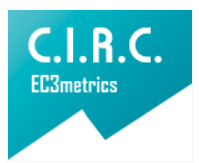Preventive Effect of Exercises With Resonance Tubes in a Teaching Group
Prevención de Alteraciones Vocales con Ejercicios de Tubos de Resonancia en un Grupo de Docentes
Main Article Content
Multiple studies have determined the importance of voice in those professionals who use it as their main work tool. Within this group are announcers, call center agents, teachers, among others; this research will deepen the professors, these are found for several hours a day using their voice to transmit knowledge within the classroom, often in poor conditions for effective work performance. In addition, they are exposed to various environmental and organizational risk factors which predispose them and generate a diversity of laryngeal pathologies characteristic of their occupation. Participants belong to a voice conservation program. The design of pre-experimental, quantitative research, using pre-test and post-test in the same population, cross-sectional descriptive, under an epidemiological approach. A vocal self-perception survey was applied as a pre-test, in order to identify the perception that these professionals had about their vocal characteristics. After this, they performed a series of exercises with resonance tubes based on the Semi-Occluded Vocal Tract (TVSO) technique and finally, the vocal self-perception survey was reapplied as a post-test to determine the physiological effects and changes of these exercises on the acoustic parameters of voice and speech characteristics such as: intelligibility, naturalness and audibility; achieving an immediate therapeutic physiological effect and a subjective perception of improvement after therapy, generating a change in the vibratory pattern of your vocal folds, minimizing abuse and vocal misuse, creating awareness of the care that should be taken with the voice when Professionally used as the main tool of his work.
Downloads
Publication Facts
Reviewer profiles N/A
Author statements
Indexed in
- Academic society
- Bogotá: Corporación Universitaria Iberoamericana
- Publisher
- Bogotá: Corporación Universitaria Iberoamericana
Article Details
Castillo, A., Casanova, C., Valenzuela, D., & Castañon, S. (2014). Prevalencia de disfonía en profesores de colegios de la comuna de santiago y factores de riesgo asociados. Santiago: Centro de Investigación de Voz y Habla CIVH, Universidad Mayor. Recuperado el 13 de Nomiebre de 2019
De Paulo, B., & Friedman, H. (1998). Nonverbal communication. En D. Gilbert, S. Fiske, & G. Lindzey, The handbook of social psychology (4ta ed., Vol. II). New York: McGraw Hill.
Guzmán, M. (2013). Terapia con tracto vocal semi-ocluido: un estudio de caso. Revista Chilena de Fonoaudiología, 11, 88.
Guzmán, M., Higueras, D., Fincheira, C., Muñoz, D., & Guajardo, C. (May/June de 2012 ). Efectos acústicos inmediatos de una secuencia de ejercicios vocales con tubos de resonancia. Rev. CEFAC, 4(3).
Le Huche, F., & Allali, A. (2004). La Voz. (2 ed., Vol. II). Barcelona: Masson .
Ministerio del Trabajo y Previsión Social. (2011). Normas sobre accidentes del trabajo y enfermedades profesionales. Santiago: Congreso Nacional de Chile.
Morrison, M., Nichol, H., & Rammage, L. (1986). Diagnostic criteria in functional dysphonia. Laryngoscope, 94, 1-8. doi: 10.1288/00005537- 198601000-00001
Rivas Reyes, M., Bastanzuri Rivas, M., & Olivera Valdés, M. (2013). El cuidado de la voz en la actividad docente. . Revista Habanera de Ciencias Médicas, 12(Suplem. 5), 74-81. Obtenido de http://scielo.sld.cu/scielo. php?script=sci_arttext&pid=S1729-519X2013000500010&lng=es&tlng= es.
Salas, E. (2013). Diseños preexperimentales en psicología y educación: una revisión conceptual. Liberabit, 19(1), 133-141.
Sataloff, R. (Oct-Dec de 2001). Professional voice users: the evaluation of voice disorders. Occup Med., 16(4), 633-647.
Simberg, S., & Laine, A. (2007). The resonance tube method in voice therapy: Description and practical Implementations. Logop Phon Vocology., 32(4), 165-70.

















